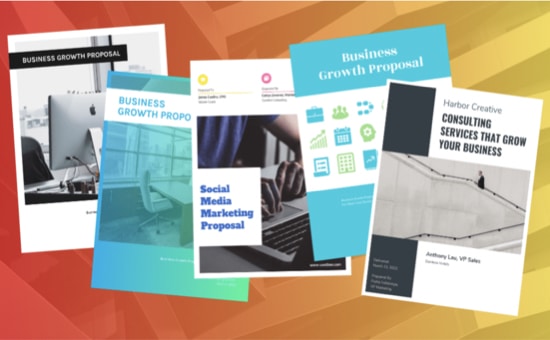Despite their expertise, many consultants struggle to close deals.
Writing a consulting proposal that closes a sale can be challenging, and as a result it may be difficult to figure out why your proposals are getting rejected.
In this article, we will look at seven tips that will improve your success rate so that you can start converting more leads.
1. Have a Sales Conversation First
A proposal should never be a cold sell. You need to make sure there’s a project to be won andthat the client would even consider hiring you.
Email or cold callthe client first to discuss the project and sell them on the value you could add. Ask the client if you can submit a formal proposal. If they’re not crazy about the idea, you need to do a better job of selling your company and the ROI you can provide.
Only when the client’s fully on board should you send the proposal. Otherwise, you’ll be wasting hours perfecting hundreds of proposals that have no real chance of bringing in business.
2. Talk About the Problem and Your Solution
Save the history of your business for the About page on your company’s web site. A proposal is not the place for a rundown on your team, resources and past clients.
Instead, focus on what will reallyimpress the client:
- The client’s unique situation. Think SWOT: strengths, weaknesses, opportunities and threats.
- The project challenges and how you can overcome them.
- The value you can provide to the client, including ROI.
Addressing these points upfront will be much more effective in getting that coveted “yes.”
3. Keep it Brief
A two to three page proposal can address the client’s direct concerns effectively.
Anything longer is probably talking about yourbusiness. You don’t want that.
You’re not adding value, just information. And if you’re not adding value, you’re not winning the project. Here’s a hack: using a template or online proposal maker can help you stay focused.
4. Mention ROI Right Away
Showing the client that their investment (in you) will give them even moreback is like catnip. They can’t resist such a proposition.
So why bury this tantalizing tidbit somewhere deep in your proposal? Put it at the beginning of your proposal. Make it easy to understand and draw attention to it by putting it in a chart, bold font, or in a text box with a different background color.
And if you think the client might balk at your high fee, one way to address their concerns is to show the tangible value they’d get by investing in you.
5. Summarise What You Already Agreed on the Call
Discuss all relevant information during your initial sales call, before you send the proposal. Make sure the client is clear on all the key points.
If you include new information in the proposal, the client may be confused or put off – they may feel that you’re trying to pull a fast one on them. Either one of those outcomes will get in the way of an immediate “yes.” Not what you want.
If there’s new information you really feel you should include, make sure it directly speaks to the value you can provide the client.
For example, you could include any additional benefits that would result from hiring you and using your ideas. If you forgot to mention them during the sales call and you’re sure they would really interest your client, include them.
6. Use a Clear Structure
To sell your idea, your proposal needs to have a structure that clearly outlines your recommendations and the resulting benefits.
It should be easy to read and flow intuitively from one section to another.
Every proposal will be slightly different, however here is one suggested structure you might use:
- Project Summary
- Deliverables
- Measures of Success
- Timing
- Terms and Conditions
The best way to keep yourself organized is to use a consulting proposal template.
7. Use Plain English
Keep your writing clear and simple in your consulting proposal. Avoid any kind of legalese or industry jargon. Your ROI should speak for itself; you don’t need to throw around fancy language to get the client on board.
If you’re unsure whether you’re being clear enough, try reading your proposal out load. Find yourself getting tripped up? The client is probably going to have a tough time getting through the thing, too.
A grammar checker can also make suggestions to simplify your language.
Key Takeaway: Speak the client’s language
Your idea of what a proposal shouldbe may be wildly different from what the client actually needs.
The seven tips above will help you avoid some of the most common pitfalls and start speaking the client’s language so that you can close more sales.
Bronwyn Kienapple is a Content Marketer at Venngage. She’s also a bookworm, world traveler, cat lady and Mexican street food enthusiast. You can add her on LinkedIn.
Image: Venngage
